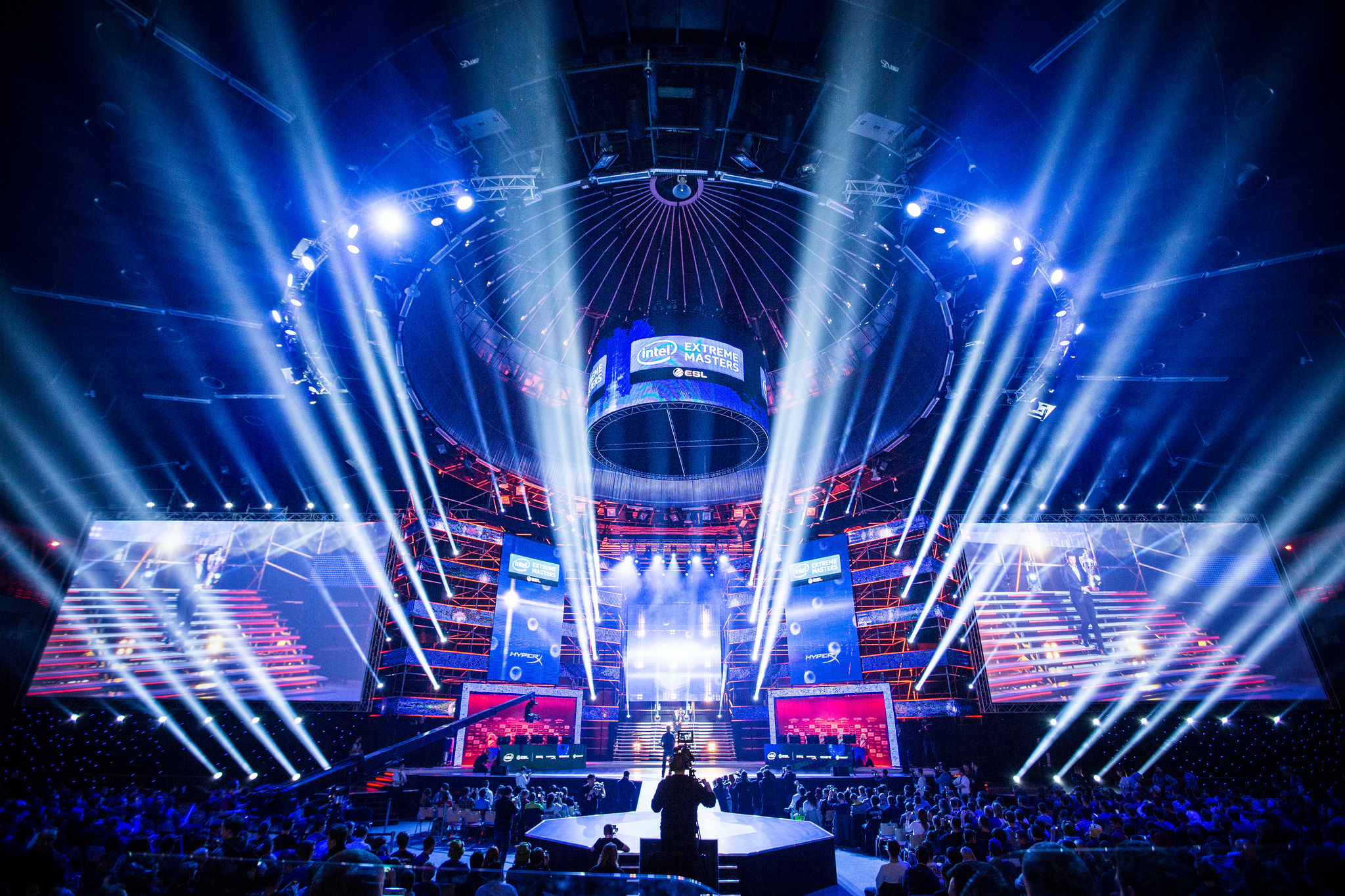
After more than 35 years of operation, TBI is closing its doors and our website will no longer be updated daily. Thank you for all of your support.
Going (digital) native
 Why are television’s biggest groups spending millions of dollars on YouTube talent-focused multichannel networks? Jesse Whittock speaks with key players to build a picture of this emerging ecosystem and identify where the digital dollars are coming from.
Why are television’s biggest groups spending millions of dollars on YouTube talent-focused multichannel networks? Jesse Whittock speaks with key players to build a picture of this emerging ecosystem and identify where the digital dollars are coming from.
Research released this summer suggested the top 100 YouTube multichannel networks are worth nearly US$10 billion, with the entire ecosystem now valued at twice that amount. The leading 100 networks were notching up a combined 100 billion views a month, according to Ampere Analysis.
Impressive numbers – especially since the average MCN with 100 million monthly views is worth US$97 million and generates US$21 million in gross revenue – but where exactly is the value for the traditional players when most of what’s made in ad-funded revenue is split between the channel creator and YouTube?
According to Arnd Benninghoff (below left), CEO of play and ventures for Modern Times Group’s digital investment arm MTGx, the value is locked in a desire to reach viewers “on their own terms”.
“This means offering them the content they want, where and when they want,” he says. “Young generations of viewers and millennials are digital natives, and a lot of their viewing is done online. This has created not only an ecosystem of content driven by new talented video creators, but also significant business opportunities.”
 MTG, a European broadcast, production and distribution group, has this year moved into the MCN space by taking control of fast-growing Sweden-based start-up Splay and Netherlands-based Zoomin.TV, the former a deal that brought its 41% shareholding up to 81% and the latter a 51% stake for around €44.9 million (US$48.7 million).
MTG, a European broadcast, production and distribution group, has this year moved into the MCN space by taking control of fast-growing Sweden-based start-up Splay and Netherlands-based Zoomin.TV, the former a deal that brought its 41% shareholding up to 81% and the latter a 51% stake for around €44.9 million (US$48.7 million).
“Our strategy is to invest in relevant, complementary and scalable digital brands, content and communities,” says Benninghoff. “MCNs like Zoomin and Splay have been frontrunners in connecting to millennial audiences and support the talent that creates the content that these viewers consume. The growth that these companies have been able to achieve is a testament to that.”
To illustrate that notion, he says Zoomin, which claims to be the world’s fifth-largest MCN with more than two billion monthly views and 100 million subscribers, had a growth rate of 70% last year, and that Splay has become the Nordic region’s “undisputed” market leader in less than two years.
Almost every major broadcast and production group now has some form of investment in a multichannel network. Key deals include The Walt Disney Company paying up to nearly US$1 billion for Maker Studios, ITV buying into parent-skewed Channel Mum, and Peter Chernin-backed Otter Media investing in Fullscreen, which is now launching is own SVOD platform.
This investment is in part based on a belief within the ranks of television executives that they are missing young audiences on traditional television channels and that MCNs have a better grasp on this potentially lucrative demographic.
“Television is changing,” says Reza Izad (below right), CEO of Collective Studio 71. “People are consuming differently and that is changing the economic model.”
“There is certainly a sound logic underpinning this series of deals,” says Adam Thomas, principal analyst at Ovum, “But the acquisition of MCNs is just the start of the process, as their owners seek to move beyond YouTube and transform their assets into multiplatform networks that are active across as many outlets as possible.”
 Collective Studio 71, valued at US$240 million, is the result of a merger between Studio 71, the MCN arm of another European broadcast group, ProSiebenSat.1 Media, and LA’s Collective Digital Studio.
Collective Studio 71, valued at US$240 million, is the result of a merger between Studio 71, the MCN arm of another European broadcast group, ProSiebenSat.1 Media, and LA’s Collective Digital Studio.
The deal, closed over the summer, saw ProSiebenSat.1 take a 75% stake, with Izad and his Collective Digital Studio co-founder Michael Green) jointly managing the company with Christof Wahl and ProSieben’s Sebastian Weil and Ronald Horstman. The firm’s leading channels include Good Mythical Morning, Cyanide and Happiness, and VitalyzdTv.
“ProSieben’s Studio 71 was a combination of really great TV content distributed online such as for The Voice Kids, leveraging their shows into social, short-form video, and talent: they had five of the top ten German YouTube stars,” says Izad. “They were leveraging their media skill to drive revenues, and that’s something we could identify with.”
Izad says each side of the new company benefits the other with direct sales to specific client bases. “As we build a network of sales and talent around the world, there are lots of synergies and lots of opportunities. Plus the world is going multiplatform – and not just on YouTube – and it has gotten really interesting. That means you need smart people around the world, and the nice thing [about Collective Studio 71] is this is going to be highly synergistic. We’re going to be coordinated and controlled.”
Philipp Bernecker, CMO and co-founder of Germany-based MCN Divimove, has also seen his three-year-old company join a bigger media group this year. FremantleMedia paid an undisclosed amount for a 51% stake in the firm, which is another that can claim around one billion views a month. This came after RTL-owned producer FremantleMedia had acquired fashion and beauty-focused StyleHaul and BroadbandTV, which itself went on to acquire kids- and teen-skewed MCN YoBoHo.
“In the case of Divimove, we’re investing in growth and building an actual business, and that’s something that’s very important for us [regardless] of what’s happening in the market around us,” says Bernecker.
He points to three key elements behind the recent M&A activity: access to talent, access to niche demographics and distribution channels, and accrued data. For the MCNs, the play is simpler, sources argue: immediate scale and investment, and experience with professional production. “We profit a lot from that,” says Bernecker, who argues that the term MCN “means nothing”, adding: “We are actually a digital-native company.”
Divimove’s key talent includes EnzoKnol and makeup-focused Nikkie Tutorials (below).
 Endemol Shine Group has taken a different approach with its digital content arm, Endemol Beyond. The parent firm invests Ä10 million a year in its own network, which is focused on premium original programming through locally curated digital channels such as Icon and Legends of Gaming.
Endemol Shine Group has taken a different approach with its digital content arm, Endemol Beyond. The parent firm invests Ä10 million a year in its own network, which is focused on premium original programming through locally curated digital channels such as Icon and Legends of Gaming.
“Launching our own MCN has allowed us to build up our own properties, formats and content and so was always going to be the best fit with the broader focus of the group,” says Georg Ramme (below left), who has run the operation since its launch in 2013 and was recently promoted to group managing director.
Essentially, the core idea is to replicate Endemol Shine’s formats-development business through local production hubs manned by creative digital producers that understand the requirements of different platforms.
“We invest in content that is engaging, sellable and brand friendly, achieves a high number of views and has the potential to travel internationally,” says Ramme.
“There are three key areas we consider in scaling the investment: first the size of the market, second the capacity to monetise in the market and third the growth potential of the market.”
 Ramme says the emergence of the MCN market was a natural evolution. Looking at the wider ecosystem, he says: “The digital world and online video market has simply opened up new ways of distribution and reaching audiences, and the way that today’s young generation are choosing to consume content means that online video is becoming increasingly central to what we do.”
Ramme says the emergence of the MCN market was a natural evolution. Looking at the wider ecosystem, he says: “The digital world and online video market has simply opened up new ways of distribution and reaching audiences, and the way that today’s young generation are choosing to consume content means that online video is becoming increasingly central to what we do.”
“Obviously the market is still young and has a long way to go, but it is growing and the monetisation and budgets are increasing,” he adds. “And we actually are already making profits in this space. More broadly, online video is a rapidly growing market for content, and one that producers have to be part of if we are to be equipped for the future.”
Both Endemol Beyond and Collective Studio 71 see MCNs as a breeding ground for television formats and content that can be sold to more established digital platforms such as Netflix and Amazon Prime Instant Video or broadcasters.
A show based on CS71’s Cyanide and Happiness channel has been sold to an undisclosed OTT service, and talent from the LA side such as Fred Finklehorn and The Annoying Orange have had huge success transitioning to US children’s cable channels.
The deal with ProSiebenSat.1 is also feeding a strategy to launch digital formats internationally, which is similar to the Endemol Beyond localisation plan. A Studio 71-shot German show titled Last Man Standing will soon be turned into an international effort, as Izad believes it would work “as much in the US as in Europe”.
“We have a whole team of folks that identifies talent,” he says. “Some people want to grow audiences, while some want ad sales, and we look to see if we can build a plan around that. We do launches, content creation and ad sales very well. We also have technology that we use to identify talent early.”
Izad says it has become a “very competitive market” for premium digital content, both for the social web and OTT platforms. “We have to make sure content gets to the market correctly,” he adds. “We want to maximise every deal.”
MTG’s Zoomin will also benefit from being in a group with a major TV producer, namely Nice Entertainment, says MTGx’s Benninghoff. “Zoomin’s strong background in digital video-content creation will enable it to work closely with Nice in order to continue evolving our content products,” he says.
MTG has also acquired a 74% stake in Cologne-based ‘e-sports’ gaming specialist Turtle Entertainment, which distributes more than 16,000 hours of live content from events including Intel Extreme Masters (top) via channels including Twitch and YouTube.
“Gaming video content alone already attracts 468 million online viewers, and is a US$3.8 billion revenue opportunity, according to a recent report by Superdata,” says Benninghoff.
Ampere Analysis estimates that typical MCN valuations are between 25 and 35 times annual revenues (this compares with between eight and 15 for typical TV producer acquisitions), but that this still represents good value thanks to the huge growth rates, global reach and the future-proofing opportunity.
“Many MCNs are seeing 100-200% or more growth year-on-year,” says Ampere research director Richard Broughton. “This is a big contrast to slow – or contracting – growth at traditional broadcast businesses.”
Furthermore, “To use the ‘S’ word – ‘synergies’ – ad-sales, production expertise, rights buying and cross-promotion, are all reasons for the combined company to be stronger”, he adds.
“Lastly, they permit rapid innovation and experimentation with formats and shows at low direct cost and low opportunity cost – format experimentation in traditional broadcast can be expensive, as there are finite broadcast slots to use. The same isn’t true for online.”
 With most major MCNs now part of larger groups, there is a sense the land grab is over, but firms are still eyeing investmenmt. “We are always on the lookout for relevant investment opportunities that are in line with our strategy,” says Benninghoff. “We already have our own portfolio of popular digital SVOD and AVOD services, and these businesses complement our existing reach and content offering perfectly.
With most major MCNs now part of larger groups, there is a sense the land grab is over, but firms are still eyeing investmenmt. “We are always on the lookout for relevant investment opportunities that are in line with our strategy,” says Benninghoff. “We already have our own portfolio of popular digital SVOD and AVOD services, and these businesses complement our existing reach and content offering perfectly.
The content and formats that our new companies provide let us reach more viewers with more content, and also explore the opportunities for cross promotion and on-going evolution of all of the services.”
However, some of the deals of recent years have had “a whiff of undue haste about them”, says Ovum’s Thomas. “There are only so many large-scale MCNs in play, so anyone wishing to enter the sector had to act quickly or risk being left out. At US$500 million-plus, Disney has paid a serious price for Maker and there are indications that the assimilation process has not been particularly smooth. But that’s understandable when old media and new media are thrown face-to-face and, after these teething troubles, the benefits for franchises like Marvel and Star Wars will easily outweigh the negatives.”
For most MCNs and their new families, YouTube is the most important distribution platform. However, other on-demand sites are also factored into business plans, and some are now seeing the financial sense in launching their own platforms – an MCN equivalent to premium cable channels launching over-the-top distribution services.
UK-based production group Barcroft Media is not an MCN in the traditional sense, but does runs the first British YouTube channel to reach one million subscribers. It has a suite of thematic YouTube channels following deals with the likes of Bear Grylls. Recently, it launched its own platform, Barcroft.TV, which focuses on the firm’s particular brand of popular factual and includes original long-form documentaries such as There’s a Polar Bear in My Pool! (below left), 1-800-AUTOPSY and Landing Sharks.
“We have been trying to find somewhere for the content that was getting hits to have its own space and to build a brand around free-to-air factual via online,” says Barcroft Media CEO Sam Barcroft.
“Barcroft wants to focus on producing for broadcasters, but as that becomes more challenging we have this [digital] stream,” he adds. “Documentaries have lots of potential outlets, and we can decide how to use that content; we could pitch it to broadcasters, or use it as part of our news coverage or as a long-form special.”
Barcroft says this proves a new maxim for television producers: “Producers can and should be thinking like channels now.”
 Endemol Beyond’s American arm, Endemol Beyond USA, has also created its own direct-to-consumer platform, GetBeyond.US. This includes programming from the fashion-focused Icon channel, with content from upcoming gaming and sports network Smasher and pop culture channel Looksy also to be added.
Endemol Beyond’s American arm, Endemol Beyond USA, has also created its own direct-to-consumer platform, GetBeyond.US. This includes programming from the fashion-focused Icon channel, with content from upcoming gaming and sports network Smasher and pop culture channel Looksy also to be added.
Endemol Beyond USA’s interim president, Adrian Sexton, said in September that GetBeyond.US would streamline “our consumer experience with strong branding, promotion and distribution”.
However, content is reaching the market, the groundswell of interest of the past few years looks set to continue, and MCNs seem set to play an even more important role in the evolving converged-media landscape.
“We see online video as an additional and complementary market to traditional television,” says Endemol Beyond’s Ramme. “Both areas have their own relevance and purpose; the two aren’t mutually exclusive. However, I believe that the MCNs are becoming the ‘broadcasters’ of the digital world.”
“I think it’s safe to say that there are no longer any ‘traditional TV companies’,” adds MTGx’s Benninghoff. “The businesses that do not make the transition to being digital entertainers will not be here when we look around us in a few years.”
Ampere’s Broughton says the MCN space could ultimately prove vital for the broadcat industry. “There’s always an element of risk, but the high growth means that if rates are maintained, the prices paid could look like bargains in three to five years.”
It’s safe to say this disruptive online space will remain a point of discussion for some time, whether we’re calling it the MCN or digital native market, or something else altogether.


